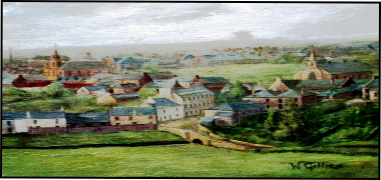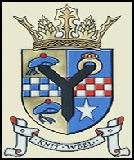Stewarton & District Historical Society Scottish Charitable Incorporated Organisation : SC011194.

Dunlop Street 1970D

Stewarton Viaduct 2008
Coat of Arms reproduced by permission of Stewarton Community Council

Springwell Place 1860

Site produced by
“Davie McKie’s Web Designs.”
Updated
26th January 2024
K -
Ian’s A-

LETTER K -
Kennox House near Stewarton is the only Grade 1 Listed Building in the area, while
the Gates and Lodge were also listed at one time. The name, however, is not a local
name, as it was originally called Crivoch. The lands were bought around 1700 by John
Somerville,who owned an estate in Lanarkshire called Kennox and he brought the name
to this area. A daughter of the family married a McAlester and the surnames were
combined to give us Somerville -
The house passed through various hands, including Gregor Fisher, the noted Scottish actor, who started attempts to restore the house to its former glory.
It would seem that there have been people living in the area long before the building
of Kennox House around 18?? There are two pieces of evidence of earlier habitation,
the first being a very old yew tree, which would have to have been planted as it
is not a native species to the area. It is believed to be around 700 -



Signature of James Somerville McAlester
Additional data -
Predominantly mid 18th century in origin with substantial early 19th century additions
and alterations (see Notes). Symmetrical 2-
FURTHER DESCRIPTION: PRINCIPAL
ELEVATION TO S:
Central double fore stair with decorative cast-
WING TO REAR (N): W elevation:
central symmetrical 6-
Predominantly 12-